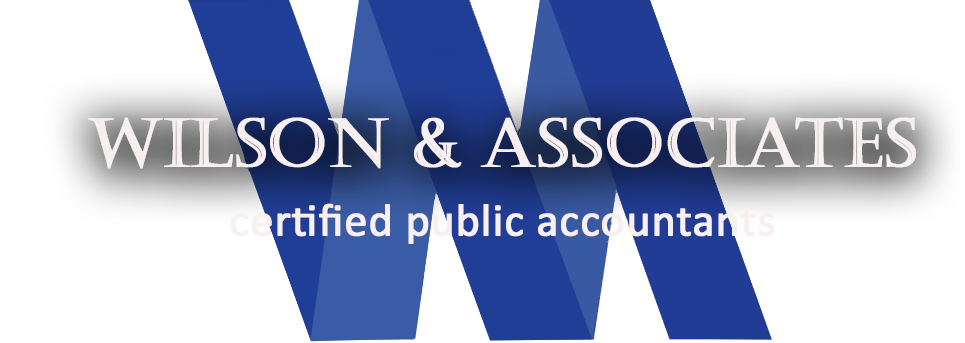Common Pitfalls in 401(k) Audits and How to Avoid Them
For businesses with over 100 eligible participants in their 401(k) plan, an annual audit is not just a requirement—it’s a critical part of maintaining plan integrity and legal compliance. However, first-time and even seasoned plan sponsors often encounter avoidable pitfalls that lead to audit delays, IRS penalties, and Department of Labor (DOL) red flags.
At Wilson & Associates CPA, we’ve audited hundreds of retirement plans and know the most frequent traps—and how to sidestep them. In this article, we outline the top 401(k) audit mistakes and share practical steps you can take to stay compliant and audit-ready in 2025.
Top 401(k) Audit Pitfalls (And How to Avoid Them)
Late Employee Deferral Deposits
The Mistake: Delays in transferring employee contributions from payroll to the plan trust—especially beyond 7 business days—can trigger DOL violations.
Why It Matters: The DOL views late deposits as misuse of employee funds and may require:
-
Lost earnings calculations
-
Self-correction through the Voluntary Fiduciary Correction Program (VFCP)
-
Possible excise taxes
✅ How to Avoid It:
-
Automate payroll remittance to the plan as soon as administratively possible
-
Monitor deposits regularly
-
Set internal deadlines shorter than the regulatory limit
Eligibility Tracking Errors
The Mistake: Failing to enroll eligible employees on time—or enrolling ineligible employees due to misapplied service rules.
Why It Matters: This can lead to missed deferrals, employer match corrections, and potential IRS sanctions.
✅ How to Avoid It:
-
Maintain a live eligibility tracker
-
Cross-check hire dates, hours worked, and plan entry dates
-
Use a TPA or payroll-integrated system to alert HR when employees reach eligibility
Incorrect Definition of Compensation
The Mistake: Misalignment between what payroll considers “compensation” and what the plan document defines as compensation (e.g., bonuses, overtime, commissions).
Why It Matters: Leads to over- or under-contribution, potentially affecting multiple participants and requiring costly corrections.
✅ How to Avoid It:
-
Review your plan document definitions annually
-
Train payroll staff and HR on eligible compensation types
-
Reconcile total compensation with W-2 and plan records quarterly
Missing or Incomplete Plan Documents
The Mistake: Inability to produce current or signed versions of:
-
Plan Document
-
Adoption Agreement
-
Summary Plan Description (SPD)
-
Amendments and IRS opinion letters
Why It Matters: Without complete documentation, auditors cannot verify plan compliance or eligibility determinations.
✅ How to Avoid It:
-
Digitally store all signed and dated plan documents in one location
-
Request updated documents from your recordkeeper or TPA annually
-
Review the SPD to ensure participants receive accurate plan information
Inaccurate Participant Data
The Mistake: Incorrect or outdated census data (e.g., birth dates, hire dates, compensation, or termination dates) can compromise the audit’s integrity.
✅ How to Avoid It:
-
Conduct annual audits of employee census data
-
Coordinate updates between payroll, HR, and your TPA
-
Use secure portals for TPA and CPA data submissions
Failure to Monitor Plan Service Providers
The Mistake: Assuming that your recordkeeper or TPA is handling compliance without verification.
Why It Matters: Fiduciary responsibility still lies with the employer, not the third party.
✅ How to Avoid It:
-
Review service agreements and 408(b)(2) fee disclosures annually
-
Confirm providers are bonded and compliant
-
Schedule annual performance reviews with all providers
Improper Handling of Plan Loans
The Mistake: Allowing loan amounts to exceed IRS limits or failing to collect loan repayments on time.
Why It Matters: May result in deemed distributions and taxable events for employees.
✅ How to Avoid It:
-
Use loan tracking software integrated with payroll
-
Adhere to IRS limits: 50% of vested account balance or $50,000 max
-
Monitor repayment schedules and enforce payroll deductions
Incorrect Form 5500 Filing
The Mistake: Filing Form 5500 late, omitting required schedules (e.g., Schedule H), or submitting incomplete audit reports.
✅ How to Avoid It:
-
Start audit prep at least 60–90 days before July 31 filing deadline
-
Use experienced CPA firms for timely, DOL-compliant audit reports
-
Request a filing extension via Form 5558 if needed
Summary: 401(k) Audit Pitfalls At-a-Glance
| Pitfall | Prevention Tip |
|---|---|
| Late deposits | Automate remittance and monitor regularly |
| Eligibility errors | Maintain live tracking of hire and service data |
| Compensation mismatch | Align payroll with plan definitions |
| Missing docs | Digitally archive signed documents |
| Data errors | Audit census data annually |
| Service provider oversight | Perform yearly reviews and maintain fiduciary logs |
| Loan issues | Use automated loan tracking and educate employees |
| 5500 filing mistakes | Prepare early and file complete reports with audit |
Why Choose Wilson & Associates CPA?
We specialize in limited-scope and full-scope 401(k) audits and bring unmatched expertise in:
-
ERISA and DOL audit standards
-
Timely Form 5500 reporting
-
Audit readiness consultations
-
Correction and compliance strategies
Whether it’s your first audit or your fifth, we make the process efficient, transparent, and penalty-free.
Final Thoughts
Your 401(k) audit doesn’t need to be stressful—as long as you know what to avoid and who to trust. By addressing these common pitfalls early, you’ll not only survive your audit but strengthen the credibility and performance of your retirement plan.
Need a pre-audit checklist or support with your Form 5500 filing?
Contact Wilson & Associates CPA today to ensure your 401(k) audit is smooth, compliant, and worry-free.
